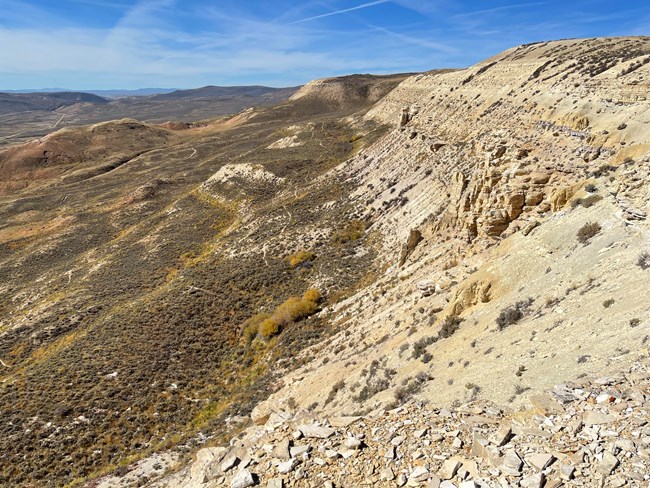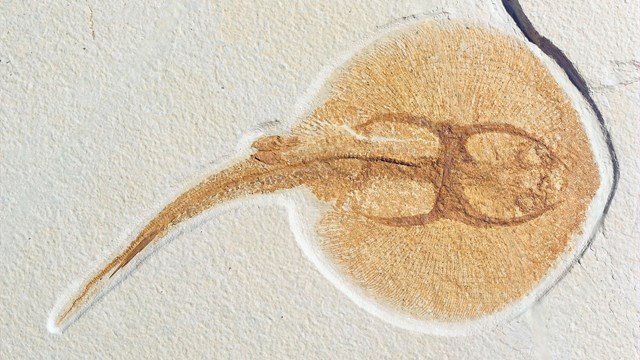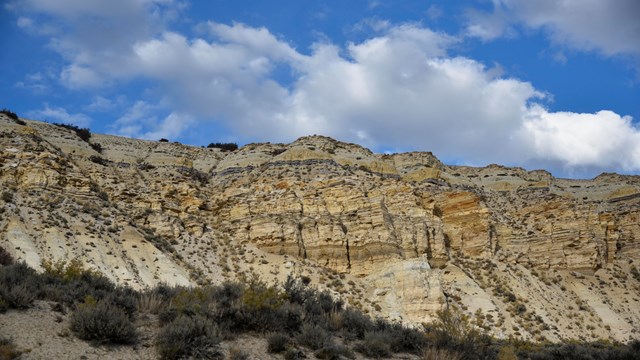
NPS / John Collins Fossils from the FBM are world famous for their abundance, diversity, and preservation. The most common vertebrate fossil in the world, Knightia eocaena, is found here. The oldest complete bat fossils come from the FBM as well as the only complete freshwater stingrays. Preserved wing venation of damselflies allows the identification of different species. In one species (Tynskysagrion brookeae), preserved color patterns in the wings differentiated males and females. The diversity and abundance of well-preserved fossils paints a more complete picture of the ancient ecosystem than most fossil locations. With each new fossil found, more is learned about life in and around ancient Fossil Lake. 
Discover the Fossils
Discover the significance of these world-class fossils from the Green River Formation's Fossil Lake deposit. 
Geology
Discover more about the geology of the Green River Formation. |
Last updated: December 18, 2024
